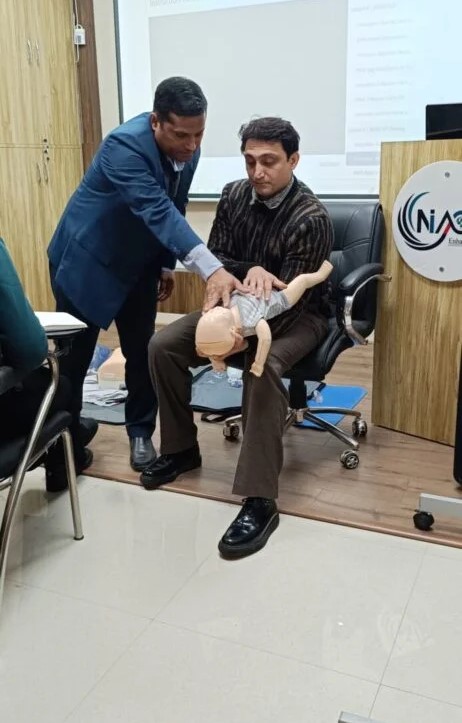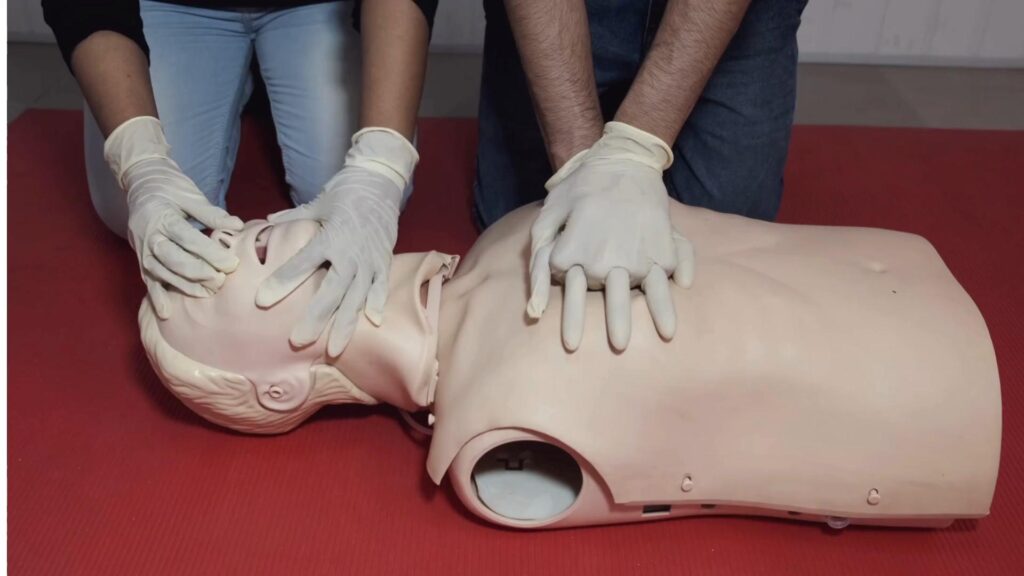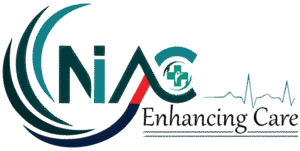BASIC LIFE SUPPORT
BLS Training Program: Elevate Your Emergency Response Skills
Understanding Sudden Cardiac Arrest
Hypoxia
A condition characterized by insufficient oxygen levels in body tissues, leading to cellular dysfunction and potential organ failure. It can result from various factors, including respiratory issues and high altitudes.
Hyperkalemia and Hypokalemia
Abnormal blood potassium levels—high (hyperkalemia) or low (hypokalemia)—can cause heart issues or muscle weakness and require close monitoring and treatment.
Tension Pneumothorax
A life-threatening condition where air trapped in the pleural cavity increases pressure, collapsing the lung and impeding blood return to the heart. Immediate decompression is necessary to relieve the pressure and restore normal breathing.
Hypovolemia
A critical reduction in blood volume often caused by trauma, dehydration, or fluid loss, which can lead to shock and inadequate perfusion of organs. This condition requires prompt intervention to restore fluid balance.
Hypothermia
A medical emergency that occurs when core body temperature falls below normal, disrupting metabolic functions and possibly leading to organ failure. Often caused by prolonged exposure to cold.
Cardiac Thrombosis & Myocardial Infarction
The formation of a blood clot (thrombus) in the coronary arteries that supply oxygen-rich blood to the heart muscle causes ischemia and can trigger a heart attack (myocardial infarction). Timely intervention, such as clot-busting medication or angioplasty,
Acidosis
An imbalance in the body's pH levels, often due to lactic acid buildup from anaerobic metabolism, can disrupt cell functions and cause serious complications. It is commonly linked to conditions like sepsis or shock.
Cardiac Tamponade
Fluid buildup in the pericardial sac around the heart restricts pumping, reducing cardiac output. This often needs urgent drainage to restore normal heart function and prevent complications.
Pulmonary Thrombosi
The presence of blood clots in the pulmonary arteries, which can obstruct blood flow to the lungs and lead to serious complications like pulmonary embolism. This condition requires rapid diagnosis and treatment to prevent respiratory failu
Why Everyone Should Know CPR
The unpredictable nature of life and the high incidence of sudden cardiac arrest, knowing CPR is crucial for everyone. Here are key reasons to learn this essential skill:
Empowerment
CPR training equips individuals with the confidence and competence to handle life-threatening situations effectively.
Lifesaving Potential
CPR can double or triple a victim's chance of survival, making it an invaluable skill in any setting.
Community Safety
Widespread CPR knowledge fosters a community prepared to respond to emergencies, enhancing overall public health and safety.
Immediate Response
In emergencies, bystanders are often the first responders. Knowing CPR allows individuals to take immediate action, significantly increasing the chances of survival.

Importance of CPR: What is CPR?
Cardiopulmonary Resuscitation (CPR) is a life-saving procedure performed when someone’s heartbeat or breathing has stopped. It involves chest compressions and rescue breaths to maintain blood flow and oxygenation to vital organs.
Why Everyone Should Know CPR:
- Sudden Cardiac Arrest: It affects thousands each year; knowing CPR can significantly increase survival rates.
- Immediate Response: CPR can be the difference between life and death while waiting for professional medical help
- Empowerment: Equip yourself with the skills to act decisively in emergencies.
What You Will Learn
Key Techniques
Cardiopulmonar y Resuscitation (CPR)
Learn vital Cardiopulmonary Resuscitation (CPR) techniques to save lives. This guide covers steps, tips, and best practices for effective CPR in emergencies. Be prepared to act!
Automated External Defibrillator (AED)
Discover the importance of Automated External Defibrillators (AEDs) in saving lives. Learn how to use an AED effectively and enhance your emergency response skills today
First Aid interventions
Master essential First Aid interventions to save lives in emergencies. Learn key techniques, tips, and protocols to respond effectively and confidently when it matters most!

Teamwork and Decision-Making
Emphasizing the importance of quick decision-making and unity within the ERT.
Latest Guidelines:
Stay updated with the most current practices in emergency cardiovascular care.
"Equip yourself to save lives—your skills can make all the difference. Together, let's turn knowledge into action!"
Dr. VARUN SURESH KHANNA
Medical Director- NIAC PVT LTD

What Happens Inside the Body During CPR?
Maintaining Blood Circulation
Compressions keep blood flowing, delivering oxygen to the brain and vital organs when the heart can’t pump during cardiac arrest.
Oxygen Supply
Although the heart is not functioning, there is typically enough oxygen in the blood to sustain brain activity for a few minutes. CPR helps to prolong this window of opportunity.
Pressure Generation
The compressions create pressure within the chest cavity, which can help eject blood from the heart's chambers, even if the heart isn't actively beating.
Recoil
Allowing the chest to fully recoil between compressions is essential, as it enables the heart to refill with blood, preparing it for the next compression.
Frequently Asked Questions
What is BLS certification?
BLS certification is a credential that demonstrates a person's ability to perform basic life support techniques, including CPR and the use of an AED.
What topics are covered in BLS training?
BLS training covers adult, child, and infant CPR, the use of an AED, rescue breathing, and relief of choking.
Is BLS certification the same as CPR certification?
BLS certification includes CPR training, it also covers additional skills such as the use of an AED and advanced airway management techniques
What is the difference between one-rescuer and two-rescuer CPR?
One-rescuer CPR is performed by a single individual, while two-rescuer CPR involves a team approach, allowing for more effective and efficient care.
Who needs BLS certification?
BLS certification is vital for healthcare workers, first responders, and anyone providing emergency
How can I obtain BLS certification?
Get BLS certified by completing a course from accredited providers, then passing written and practical exams.
Can I perform CPR on someone who is breathing?
No, CPR should only be performed on someone who is unresponsive and not breathing or not breathing normally.
How deep should chest compressions be during CPR?
Chest compressions should be at least 2 inches deep for adults, allowing full recoil between compressions.

